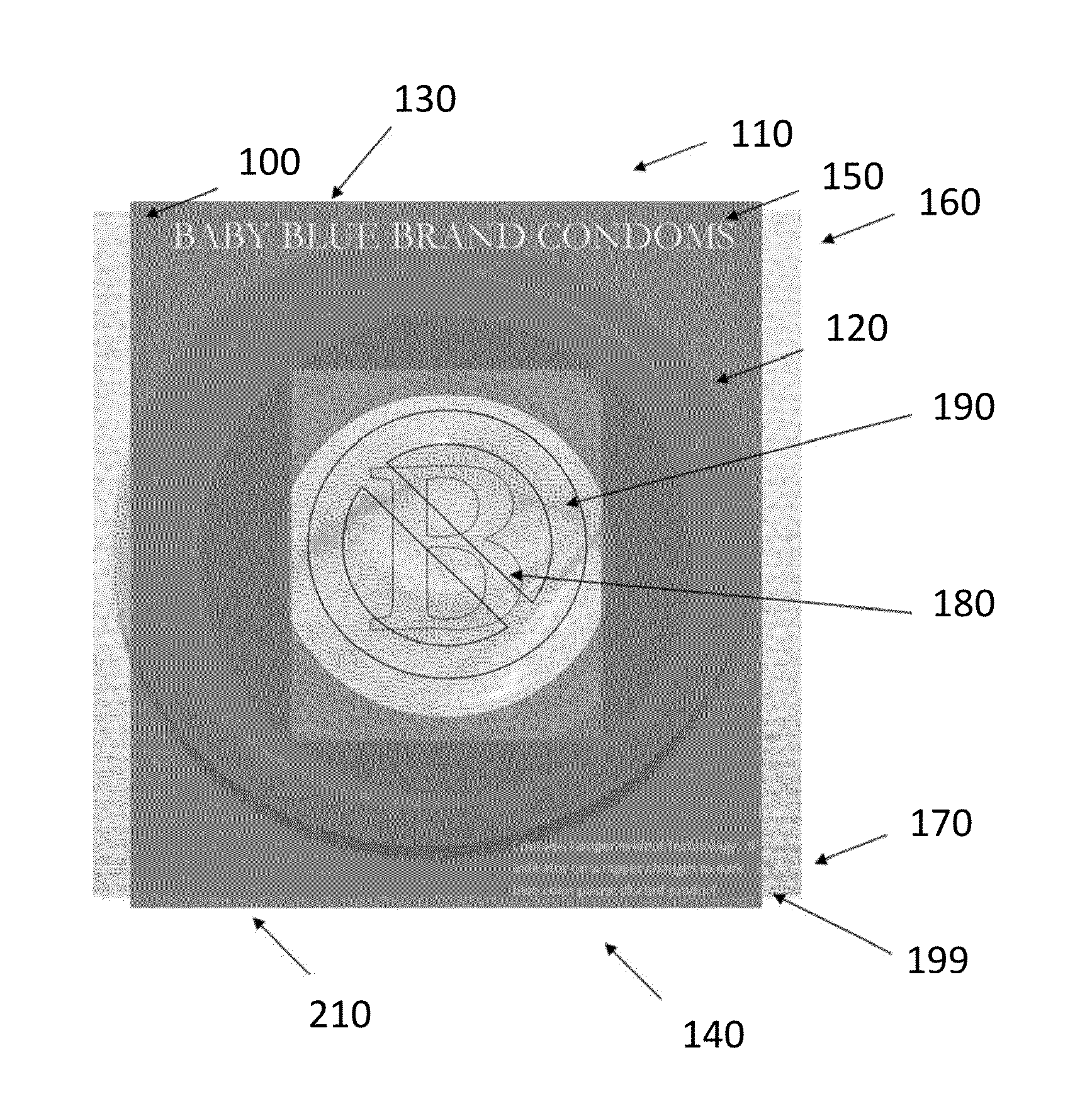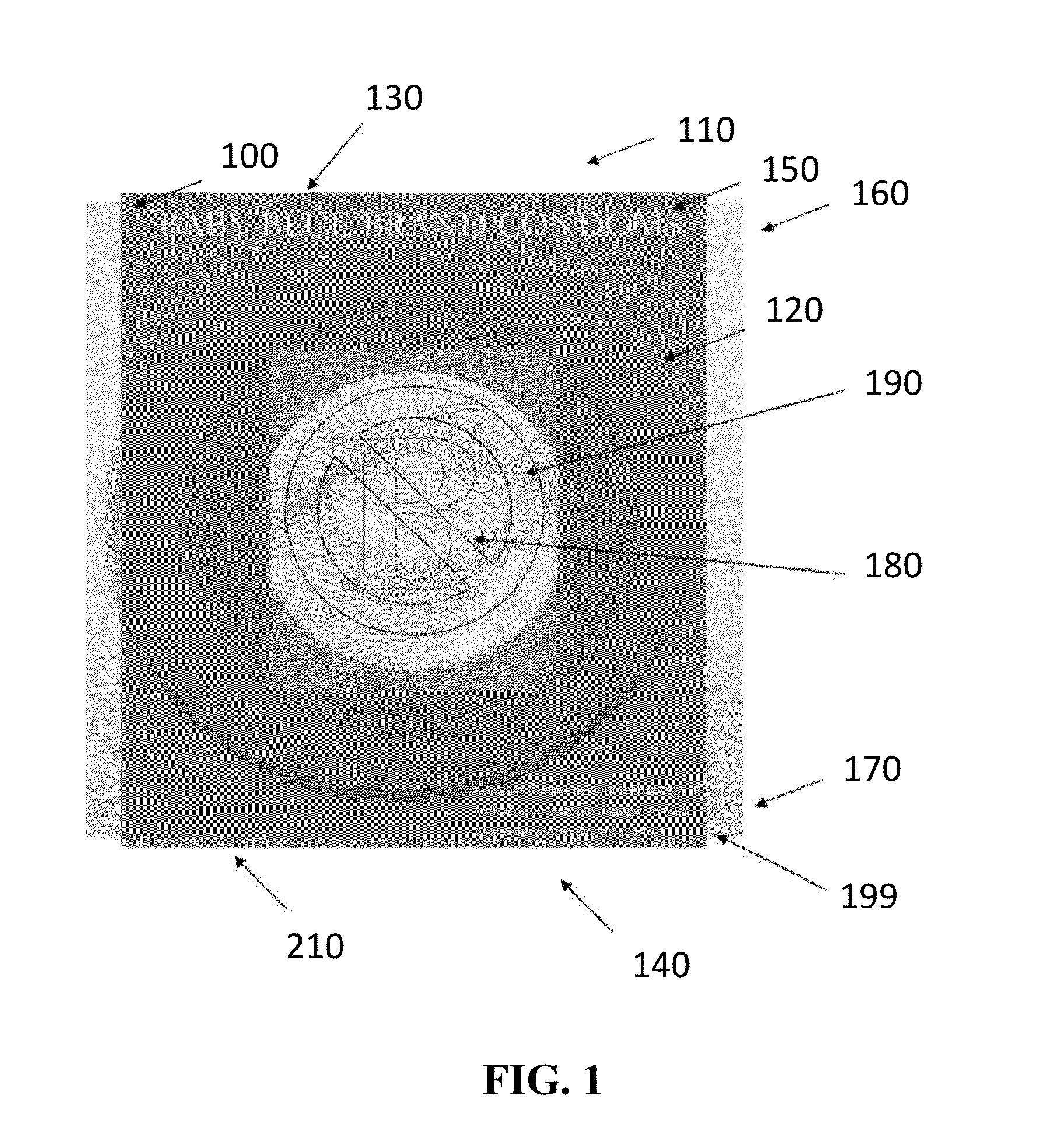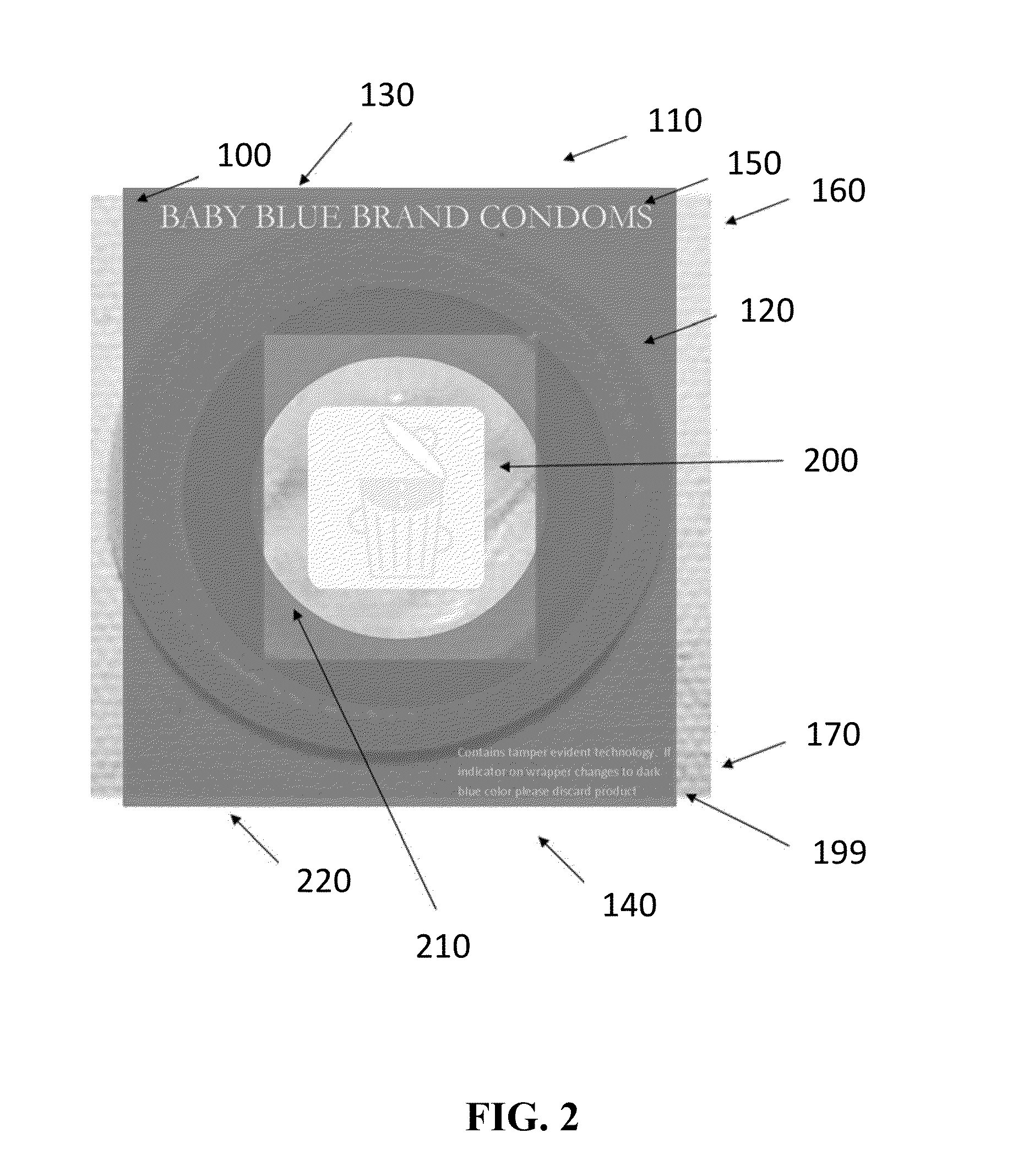Damage indicating packaging
a technology of damage indication and packaging, applied in the direction of containers for flexible articles, contraceptive devices, bandages, etc., can solve the problem that the color of damage indication material may chang
- Summary
- Abstract
- Description
- Claims
- Application Information
AI Technical Summary
Benefits of technology
Problems solved by technology
Method used
Image
Examples
example 1
[0051]A damage indicating material was made as follows. Ten grams of 5% aqueous solution of hydroxyethylcellulose (HEC) and 2.5 grams of 5% aqueous dispersion of titanium dioxide (TiO2) were added to a 20 mL amber glass scintillation vial. The mixture was sonicated for approximately 30 minutes in a warm ultrasonic bath. After dispersing the TiO2, 0.5 grams of 5% aqueous solution of methylene blue (MB) was added to the mixture. The mixture was sonicated or magnetically stirred for 10-15 minutes to disperse the MB in the aqueous mixture. After dispersing the MB into the mixture, 0.15 g of triethanolamine (TEOA) were added using a plastic or glass pipet. The final formulation was sonicated for approximately 30 minutes in a warm ultrasonic bath prior to substrate application.
[0052]The formulation was applied as a thin layer of glass or plastic film substrate and was allowed to dry. Standard laboratory glass microscope slides and 3 mil thick co-extruded polyethylene-nylon vacuum packagin...
example 2
[0057]Reactive / responsive, damage indicating materials were made using Ink 6 with methylene blue (MB) as the reactive / responsive species and triethanolamine (TEOA) as the sacrificial electron donor as set forth in Table 1. Quantities are in grams. The damage indicating material was made as follows. Two grams of well mixed Ink 6 were added to a 20 mL amber glass scintillation vial. Then 0.01-0.02 grams of the reactive / responsive species (methylene blue=MB) was weighed into the vial. Finally 0.10-0.80 grams of a sacrificial electron donor (TEOA) was weighed into the vial. A magnetic stir bar was added to the vial and the mixture was stirred and / or ultrasonicated until the dye was well dissolved or dispersed (half hour to 24 hours).
[0058]Prior to printing, the substrate was dried to remove any residual moisture. The substrate was a 75 micron thick, 2 layer co-extruded film composed of nylon and polyethylene. A small amount of the reactive / responsive ink formulation was applied to the d...
example 3
[0060]Reactive / responsive, damage indicating materials were made using Ink 6 with methylene blue (MB) as the reactive / responsive species and glycerol as the sacrificial electron donor as set forth in Table 2. Quantities are in grams. The damage indicating material was made as described in Example 2.
TABLE 2molesmolesSED / SED / molesFormu-Ink molesmolesmolesMB per lation6MBMBglycerolglycerolMBg inkE10.1 0.00026750.0620.0006732.52.5F10.010.0000267 0.0620.00067325.225.2G10.010.00002670.1240.00134750.350.3
PUM
| Property | Measurement | Unit |
|---|---|---|
| diameter | aaaaa | aaaaa |
| diameter | aaaaa | aaaaa |
| thick | aaaaa | aaaaa |
Abstract
Description
Claims
Application Information
 Login to View More
Login to View More - R&D
- Intellectual Property
- Life Sciences
- Materials
- Tech Scout
- Unparalleled Data Quality
- Higher Quality Content
- 60% Fewer Hallucinations
Browse by: Latest US Patents, China's latest patents, Technical Efficacy Thesaurus, Application Domain, Technology Topic, Popular Technical Reports.
© 2025 PatSnap. All rights reserved.Legal|Privacy policy|Modern Slavery Act Transparency Statement|Sitemap|About US| Contact US: help@patsnap.com



